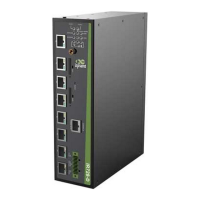61
3. Timers Used by RIP
It is specified in RFC1058 RIP that RIP is controlled by three timers, i.e. Period update, Timeout
and Garbage-Collection:
Period update timer defines the time interval between routing updates.
Timeout timer defines the routing aging time. If a routing update package is not received within
the aging time, the RoutingCost of the routing in the routing table will be set to 16.
Garbage-Collection timer defines the time from the time when the RoutingCost of a routing
becomes 16 to the time when it is deleted from the routing table. In the time of
Garbage-Collection, RIP uses 16 as the RoutingCost for sending updates of the routing. In case
of timeout of Garbage-Collection and the routing still has not been updated, the routing will be
completely removed from the routing table.
4. Prevent Routing Loops
RIP is a routing protocol based on DV algorithm. Since it notifies its routing table to the neighbors,
there is the possibility of routing loops.
RIP avoids routing loops through the following mechanisms:
Counting to infinity: Define the routing with the RoutingCost of 16 to be unreachable (infinity).
In case of routing loops, the RoutingCost of a routing will increase to 16 and the routing is
considered to be unreachable.
Split Horizon: RIP will not resend package to neighboring routers through the routing learned
from an interface by RIP, which will not only reduce bandwidth consumption, but also can
prevent routing loops.
9.2.2.2 Start-up and running process of RIP
The start-up and running process of RIP can be described as follows:
When a router starts up RIP, it will send request package to adjacent routers that run RIP
protocol in the form of broadcast or multicast. Upon receipt of request package from the
adjacent routers, the adjacent routers will return response package containing local routing table
information as the respond to the request.
Upon receipt of the response package, the router will update the local routing table, and send
triggered updates package to the adjacent routers sunning RIP protocols and notify the routing
update information. Upon receipt of triggered updates package, the adjacent routers will send
update trigging package to their adjacent routers. After a series of triggered updates, the routers
can obtain and maintain the latest routing information.
RIP sends local routing table to the adjacent routers every 30 seconds by default. Upon receipt
of package, the adjacent routers running RIP protocols will maintain local routing and select the
optimal routing before sending update information to their adjacent networks respectively to let
the updated routing finally achieve global validity. Meanwhile, RIP applies the aging
mechanism to perform aging treatment for the timeout routing to ensure a real-time and

